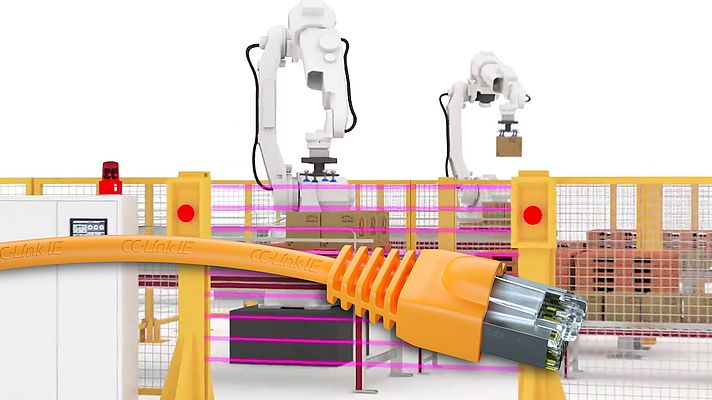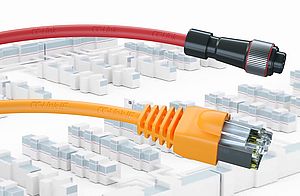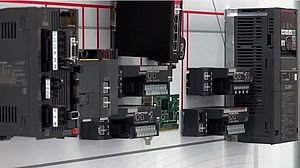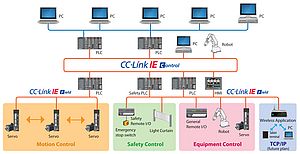CC-Link IE from CLPA Europe is the first open industrial network offering gigabit Ethernet performance. It solves the first critical challenge facing the new generation of connected factories: bandwidth. At 1Gbps, it offers performance up to 10 times that of similar protocols available today, enough to satisfy the most data-hungry modern manufacturing processes.
Standard and flexibility
CC-Link IE is based on standard IEEE 802.3 Ethernet and offers great flexibility in network design, including ring, line and star topologies. The line and star topologies can be combined to provide systems that offer the maximum application flexibility. The ring and line connections are also attractive, as they permit simple “daisy chaining” of devices, meaning the added cost and complexity of network switches can be avoided. CC-Link IE also allows considerable application flexibility by supporting multiple protocol types on the same network. This reduces costs and increases maintainability. In addition to the standard I/O control, it also offers safety (SIL3), and motion control on the same cable. This allows the CLPA to offer a cost-effective, simplified, flat network architecture that meets the needs of nearly all applications in the discrete sector.
Network
The network uses commercially available Ethernet infrastructure, such as standard gigabit switches, Cat5E cable and RJ45 connectors. A single network can incorporate a total of 120 stations with up to 100m of Cat5E cable between each station. In addition, as many as 239 networks can be interconnected. To further increase the network possibilities for end users and machine builders, CC-Link Partner Association has worked with PROFIBUS and PROFINET International (PI) to produce a specification for a “coupler” device that will allow these previously incompatible networks to be freely interoperable. Moreover, the CLPA is also working with the OPC Foundation to develop support for OPC-UA with CC-Link IE.
Improved cybersecurity
Unlike industrial protocols built on the standard TCP/IP (UDP/IP) stack, CC-Link IE combines the physical and data-link layers of the OSI hierarchy with an open protocol that extends from the network to application layers. The result is improved cybersecurity, thanks to an open, but controlled knowledge base that CLPA partners are free to implement, but reduces the exposure to unauthorized use.
Applications and communication techniques
Critically for applications that combine industrial automation with enterprise systems and cloud or internet-based technologies, CC-Link IE can encapsulate TCP/IP (UDP/IP) packets for transmission across the network, allowing this traffic to “tunnel” through the CC-Link IE system. CC-Link IE’s basic communication technique is based on a shared memory model. All the devices on the network occupy an area of the controller’s memory. To communicate with them, it’s only necessary to change the value of the data in the area corresponding to the relevant device. The network automatically handles the traffic via the standard “cyclic” (synchronous) communication.



























